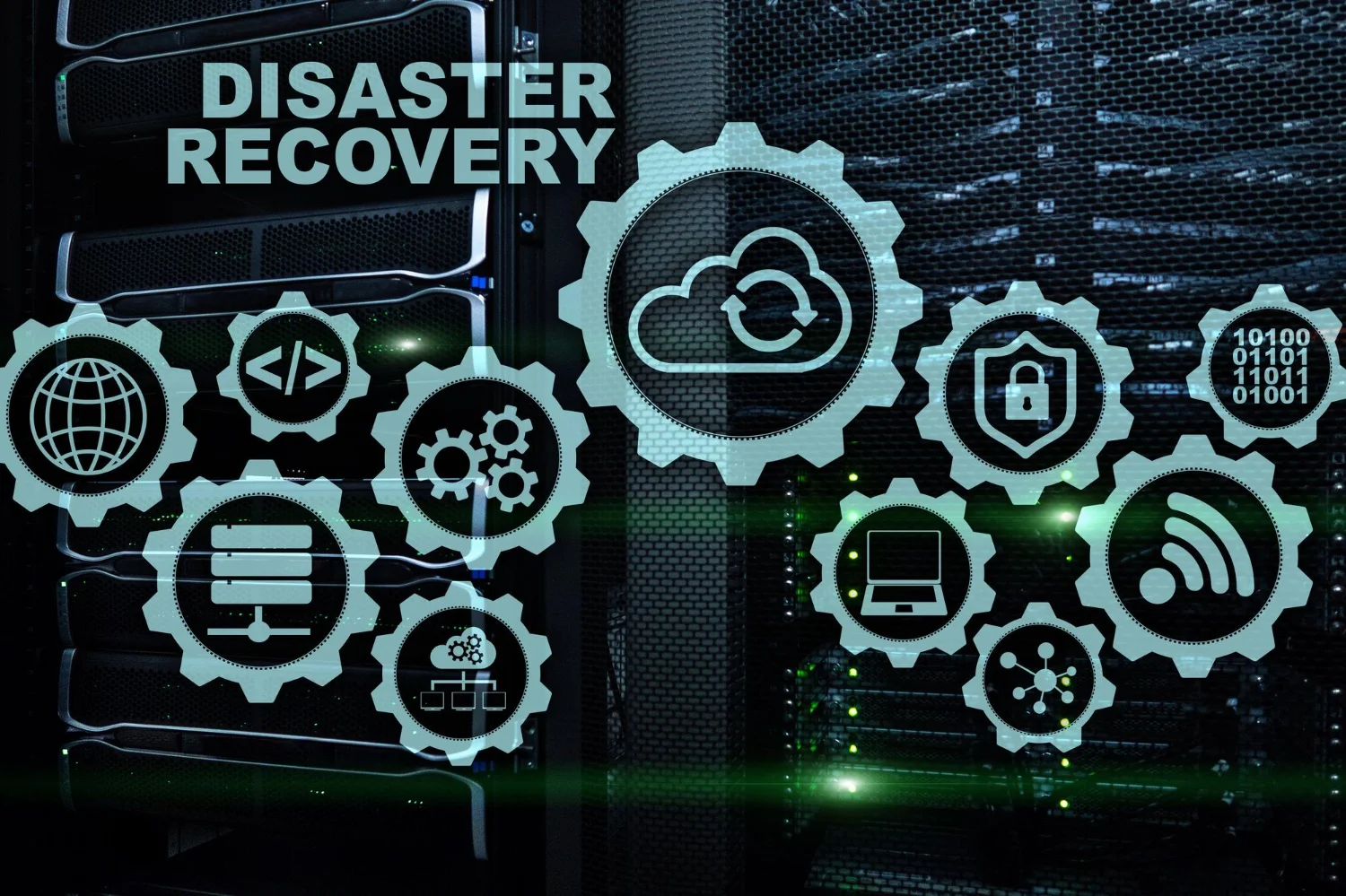A Step-by-Step Guide to Transitioning to a modern cloud-based system
Picture your organization leaving behind the constraints of outdated technology and stepping into a realm of endless possibilities. This transformation is achievable when migrating from legacy IT systems to state-of-the-art, cloud-based solutions.
Although the journey may seem daunting for small-to-medium-sized businesses (SMBs) and local governments, the advantages are substantial.
As we navigate the digital era, embracing advanced cloud technologies is not just a luxury but an essential component of success. With the proper guidance and support, your organization can make a smooth transition, unlocking the potential for increased competitiveness, innovation, and responsiveness to customer and resident needs.
In this article, we’ll serve as your knowledgeable guides, leading you through the migration process step-by-step.
We’ll address the key challenges, delve into industry-specific considerations, and share insightful success stories to illuminate your path toward a more efficient and powerful cloud-based future.
Assessing Your Current Infrastructure

Before embarking on the migration journey, assessing your organization’s current IT infrastructure is crucial. This typically involves:
1. Inventory existing assets: Catalog all hardware, software, and network components to gain a comprehensive understanding of your current IT infrastructure.
2. Evaluate performance: Assess the performance of your existing systems, identifying bottlenecks, inefficiencies, and potential areas for improvement.
3. Determine scalability: Analyze the capacity of your current infrastructure to support future growth and adapt to changing business needs.
4. Assess security posture: Review security measures and protocols to identify vulnerabilities and ensure compliance with industry standards and regulations.
5. Analyze costs: Examine the total cost of ownership for your IT infrastructure, including hardware, software, maintenance, and support expenses.
6. Review vendor relationships: Evaluate the effectiveness of your partnerships with hardware, software, and service providers, considering factors such as support, responsiveness, and overall value.
7. Identify skill gaps: Determine whether your IT staff has the expertise to manage and maintain your infrastructure, and consider training or hiring additional personnel.
8. Measure business alignment: Assess how well your IT infrastructure supports your organization’s strategic goals and objectives.
9. Evaluate disaster recovery: Review your organization’s disaster recovery plans, ensuring they are up-to-date and capable of minimizing downtime and data loss.
10. Develop an improvement roadmap: Based on the assessment findings, create a prioritized plan for addressing identified issues and enhancing your IT infrastructure.
Industry-Specific Consideration:
- Healthcare organizations, For instance, need to ensure that their migration process adheres to HIPAA regulations.
- Financial institutions must comply with PCI DSS standards.
- Local government offices must adhere to strict regulations set by state and federal governments and work collaboratively with neighboring jurisdictions.
- Non-profits often operate under tight budgets and may have limited funding and resources for IT infrastructure updates.
- Agricultural operations are in rural areas with limited internet connectivity, making implementing modern IT infrastructure challenging.
- Manufacturers must integrate emerging technologies like the Internet of Things (IoT) and artificial intelligence (AI) to streamline operations and improve efficiency.
Legacy IT Systems: The Never-Ending Challenge

Legacy IT systems can pose significant challenges to businesses and local governments.
Including:
- Outdated hardware can be difficult to maintain and may lead to increased downtime and lost productivity.
- Software incompatibility can create roadblocks to upgrading to newer systems, limiting the ability to use modern technologies.
- Limitations in scalability can also impede growth and hinder progress. Prohibitive costs of maintaining older systems can drain resources and impact the bottom line.
- Increase security risks, leaving organizations vulnerable to cyber-attacks and data breaches.
- Lack of agility and adaptability can also hinder the ability to respond quickly to changing demands and opportunities.
As organizations increasingly migrate to modern, cloud-based infrastructures, the benefits of this shift are becoming evident. SMBs and local governments can access cutting-edge technologies that enable them to stay competitive and optimize their operations. However, the transition can be challenging and requires careful planning and execution.
The Biggest Hurdles A Migration Faces

Migrating your IT and technology infrastructure can be challenging for smaller organizations and local governments. It can even seem impossible, as you may face unique constraints and hurdles.
As a Managed Service Provider, here are some of the difficulties our partners experienced that brought them to our door.
Limited resources and budget constraints: Smaller organizations often need more financial and human resources, making large-scale IT projects more challenging.
- Solution: Leverage cost-effective cloud solutions that offer flexible, pay-as-you-go pricing models to minimize upfront investment. Also, consider partnering with a managed service provider specializing in helping smaller organizations manage and execute the migration process.
Need for in-house expertise: Your organization may need dedicated IT teams with extensive knowledge of cloud technologies and migration strategies.
- Solution: Invest in training and development for in-house IT staff to build necessary skills or engage external consultants and migration experts to provide guidance and support throughout the process
Resistance to change: Change is difficult, and you may need more support to help your employees make the change. They are often very accustomed to legacy systems and workflows, and change is always challenging.
- Solution: Develop a comprehensive change management plan, emphasizing open communication and transparency. Provide training and support to help employees understand the benefits of the new infrastructure and adapt to new processes.
Security and compliance concerns: Cloud-based systems pose different security risks and compliance challenges.
- Solution: Thoroughly research and select cloud providers with strong security measures and a proven track record of compliance with industry-specific regulations. Make sure your IT provider has a fully-layered cyber security solution.
Fear of downtime and potential data loss: Migrating IT infrastructure may raise concerns about potential downtime and data loss, which can significantly impact smaller organizations.
- Solution: Develop a well-structured migration plan with built-in contingencies and fallback options. Conduct thorough testing and validation before full implementation to minimize the risk of downtime and data loss.
By proactively recognizing and addressing these challenges, smaller businesses and local governments can successfully navigate the migration process and reap the benefits of modern, cloud-based infrastructures.
Benefits of Migrating to Cloud-Based Infrastructures

Transitioning from legacy IT systems to cloud-based infrastructures offers numerous advantages for small to mid-sized organizations and local governments. By understanding these benefits, decision-makers can confidently move forward with their migration plans.
1. Cost savings: Migrating to the cloud can significantly reduce hardware and maintenance expenses. With cloud-based solutions, organizations no longer need to invest in expensive on-premises equipment or allocate resources for ongoing maintenance. Instead, they can take advantage of a pay-as-you-go model, allowing for better budget control and optimization of IT costs.
2. Scalability: One of the most compelling benefits of cloud-based infrastructures is their inherent scalability. Organizations can easily adjust their resources to meet fluctuating demands, ensuring they can grow and adapt. This flexibility helps avoid the limitations imposed by legacy systems, supporting their goals and objectives more effectively.
3. Data security: Cloud providers invest heavily in state-of-the-art security measures to protect their clients’ data. By migrating to the cloud, organizations can benefit from advanced encryption, access controls, and regular security updates, reducing the risk of data breaches and unauthorized access.
4. Accessibility: With cloud-based infrastructures, employees can access data and applications from any location with an internet connection. This remote access capability enhances collaboration and productivity, enabling teams to work together seamlessly, even when physically apart.
By understanding and harnessing these benefits, small to mid-sized organizations and local governments can overcome the challenges associated with legacy IT systems and embrace a more efficient, secure, and agile future with cloud-based infrastructures.
Planning the Migration Process

A well-planned migration process ensures a smooth and successful transition from legacy IT systems to cloud-based infrastructures. By following a systematic approach, organizations can mitigate risks and minimize disruptions during migration.
Here are 10 steps to get you started:
1. Define your goals and objectives
Before embarking on the migration journey, it’s essential to establish clear goals and objectives for the project. Identify the specific outcomes you expect from the migration, such as improved efficiency, cost savings, or enhanced security. These goals will serve as a roadmap, guiding your decision-making.
2. Assemble a dedicated migration team
Creating a dedicated team with representatives from various departments will ensure that all stakeholders are involved and informed throughout the migration process. This team should include members with expertise in IT, finance, operations, and any other relevant areas. Regular communication and collaboration will help to address any concerns and ensure a smooth transition.
3. Conduct a thorough assessment of your current IT infrastructure
Utilize the bulleted list provided earlier to assess your existing IT infrastructure, which will help you identify areas of improvement, potential risks, and opportunities for cost savings. This information will inform your migration strategy and help you decide which systems to prioritize and how best to allocate resources.
4. Choose the right cloud service model and provider
Selecting the appropriate cloud service model and the provider is a critical decision to impact your migration’s success significantly. Evaluate your options based on your organization’s unique requirements, such as storage capacity, processing power, and security needs. Consider the provider’s reputation, support services, and compatibility with your existing systems.
5. Develop a detailed migration plan
With your goals and objectives in mind, work with your migration team to create a comprehensive plan outlining each phase of the migration process, from preparation to execution and post-migration support. This plan should include a timeline, resource allocation, and contingency plans for any potential issues that may arise.
6. Prioritize systems and applications
Determine which systems and applications are most critical to your organization’s operations, and prioritize them for migration. Focusing on these high-priority areas first can minimize disruption and ensure a smoother transition.
7. Implement a phased migration approach
Instead of migrating all systems and applications simultaneously, consider implementing a phased approach. This method allows you to migrate smaller, manageable portions of your IT infrastructure, minimizing downtime and reducing the risk of unexpected issues.
8. Test and monitor the migration process
Throughout the migration process, testing and monitoring each phase is vital to ensure that the transition is successful and that any issues are promptly addressed. This step will also help you identify and resolve performance or compatibility issues before they impact your organization’s operations.
9. Provide training and support for end-users

Migrating to a new system often requires end-users to learn new processes and adapt to modern technologies. To ensure a smooth transition, provide adequate training and support resources to help users feel confident and capable when navigating the new cloud-based environment.
10. Continuously optimize and improve
The migration process continues once your systems and applications are in the cloud. Instead, continuously monitor and optimize your new infrastructure to meet your organization’s evolving needs and objectives. This ongoing process will help you maximize the benefits of your cloud-based solution and ensure long-term success.
By following these practical steps, SMBs and local governments can successfully migrate from legacy IT systems to modern cloud-based solutions, unlocking benefits and ensuring a bright, efficient, and secure digital future.
Overcoming Migration Challenges
Migrating from legacy IT systems to cloud-based infrastructures can present various challenges. However, by addressing these potential obstacles proactively, organizations can ensure a smoother and more successful migration.
- Ensuring data integrity:
During the migration process, it’s essential to maintain the integrity and accuracy of your data. Developing a comprehensive data migration strategy, including backup and verification processes, will help prevent data loss, corruption, or inconsistencies.
- Minimizing downtime:
Reducing disruption to daily operations is a top priority for organizations undergoing migration. Organizations can minimize downtime and maintain productivity by carefully planning the migration timeline, scheduling tasks during periods of low demand, and utilizing tools that enable seamless data transfer.
- Managing change:
Transitioning to a cloud-based infrastructure may require significant employee adjustments, including learning new systems and processes. Providing ample training, support, and resources can help ease the transition and ensure staff members are prepared to utilize the new infrastructure effectively.
- Securing data and systems:

As with any major IT project, security should be a primary concern during migration.
Implementing robust security measures, such as encryption and access controls, and collaborating closely with your cloud provider to address potential vulnerabilities can help protect your organization’s data and systems throughout the migration.
By proactively addressing these challenges, organizations can navigate the migration process more effectively and ensure the successful adoption of their new cloud-based infrastructure.
Post-Migration-Now What?
Once the migration to a cloud-based infrastructure is complete, organizations should focus on optimizing and maintaining their new environment to ensure continued success and maximum benefits.
1. Performance monitoring: Regularly monitoring the performance of your cloud-based infrastructure can help identify potential issues before they become critical. And using performance monitoring tools and implementing a systematic approach to review and analyze performance metrics is important. As a result, organizations can ensure their infrastructure’s ongoing efficiency and stability.
2. Cost optimization: One of the primary advantages of cloud-based infrastructures is the potential for cost savings. However, cloud costs can quickly spiral out of control without proper management. Therefore, organizations should regularly review their cloud usage and expenses, identify opportunities for cost optimization, and adjust their resources accordingly.
3. Security and compliance: Ensuring the security of your cloud-based infrastructure and maintaining compliance with industry-specific regulations is an ongoing process. Review and update security measures, access controls, and policies to protect your organization’s data and systems. Additionally, stay informed about changes in compliance requirements and adapt your infrastructure as needed.
4. Regular updates and maintenance: Cloud providers frequently release updates, patches, and new features to improve their services. Organizations should stay informed about these updates and implement them in a timely manner to maintain the stability and security of their cloud-based infrastructure.
By focusing on post-migration optimization and maintenance, organizations can fully harness the benefits of their cloud-based infrastructure, ensuring long-term success and a strong return on investment.
Best Practices for a Smooth Migration

Organizations should adhere to best practices throughout the process to successfully migrate from legacy IT systems to cloud-based infrastructures. By following these guidelines, small to mid-sized organizations and local governments can confidently navigate the migration process and minimize potential challenges.
- Establish clear communication: Effective communication is crucial for a successful migration. Ensure all stakeholders know the migration’s objectives, timeline, and progress. Establish a dedicated communication channel to address questions, concerns, and updates throughout the process.
- Create a contingency plan: Unexpected issues may arise during migration. A contingency plan can help organizations mitigate potential risks and quickly recover from setbacks. This plan should outline the steps to be taken in case of unforeseen challenges or roadblocks.
- Test and validate: Organizations should thoroughly test and validate their systems before fully implementing the new cloud-based infrastructure to ensure proper functionality and compatibility. This may include conducting pilot projects, testing data transfers, and verifying integrations with existing systems.
- Seek expert assistance: Migration can be a complex process, and enlisting the help of experienced professionals can be invaluable. Consider partnering with a managed service provider or consulting with cloud migration experts to guide your organization through the process and ensure a successful outcome.
By following these best practices, small to mid-sized organizations and local governments can successfully migrate to cloud-based infrastructures, positioning themselves for long-term success in today’s rapidly evolving technological landscape.
Conclusion
Migrating from legacy IT systems to modern, cloud-based infrastructures offers many benefits for small to mid-sized organizations and local governments.
By embracing this digital transformation, organizations can overcome common pain points, enhance efficiency, and better position themselves for success in today’s competitive landscape.
To ensure a smooth and successful migration, it’s essential to follow a systematic approach, addressing challenges proactively and adhering to best practices throughout the process.
Organizations should carefully assess their current infrastructure, set clear objectives, develop a well-structured migration plan, and continuously optimize and maintain their new cloud-based environment.
If you’re considering migrating your legacy infrastructure and need assistance or guidance, don’t hesitate to contact our team at Imagine IT. We’re here to help you navigate the migration process and ensure a successful outcome for your organization.





